Work location
| ||
 |
| The peasant wedding |
 |
| The triumph of Death |
 |
| Land of cockaigne / Schlaraffenland |
 |
| Die Elster auf dem Galgen (1568) |
 |
| The Tower of Babel (now in Vienna) |
 |
| The fall of Icarus. 1558. |
 |
| ‘Bezoek aan de pachthoeve’. ca. 1568. |
The temptations of St. Anthony.
1556. |
The Painter and The Buyer.
ca. 1565. |
 |
| The Tower of Babel (now in Rotterdam) Pieter Bruegel (about 1525-69), usually known as Pieter Bruegel the Elder to distinguish him from his elder son, was the first in a family of Flemish painters. He spelled his name Brueghel until 1559, and his sons retained the "h" in the spelling of their names. Pieter Bruegel the Elder, generally considered the greatest Flemish painter of the 16th century, is by far the most important member of the family. He was probably born in Breda in the Duchy of Brabant, now in The Netherlands. Accepted as a master in the Antwerp painters' guild in 1551, he was apprenticed to Coecke van Aelst, a leading Antwerp artist, sculptor, architect, and designer of tapestry and stained glass. Bruegel traveled to Italy in 1551 or 1552, completing a number of paintings, mostly landscapes, there. Returning home in 1553, he settled in Antwerp but ten years later moved permanently to Brussels. He married van Aelst's daughter, Mayken, in 1563. His association with the van Aelst family drew Bruegel to the artistic traditions of the Mechelen (now Malines) region in which allegorical and peasant themes run strongly. His paintings, including his landscapes and scenes of peasant life, stress the absurd and vulgar, yet are full of zest and fine detail. They also expose human weaknesses and follies. He was sometimes called the "peasant Bruegel" from such works as Peasant Wedding Feast (1567). 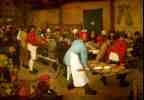 Peasant wedding Peasant weddingc. 1568 (150 Kb); Oil on wood, 114 x 164 cm (45 x 64 1/2 in); Kunsthistorisches Museum, Vienna 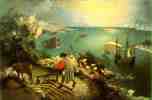 Landscape with the Fall of Icarus Landscape with the Fall of Icarusc. 1558 (180 Kb); Oil on canvas, mounted on wood, 73.5 x 112 cm; Musees royaux des Beaux-Arts de Belgique, Brussels 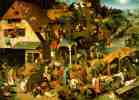 Netherlandish Proverbs Netherlandish Proverbs1559 (220 Kb); Oil on oak panel, 117 x 163 cm; Staatliche Museen zu Berlin - Gemaldegalerie, Berlin 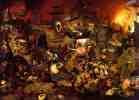 Dulle Griet (Mad Meg) Dulle Griet (Mad Meg)c. 1562 (200 Kb); Oil on panel, 117.4 x 162 cm; Museum Mayer van den Bergh, Antwerp 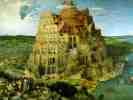 The Tower of Babel The Tower of Babel1563 (200 Kb); Oil on oak panel, 114 x 155 cm; Kunsthistorisches Museum Wien, Vienna 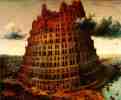 The "Little" Tower of Babel The "Little" Tower of Babelc. 1563 (180 Kb); Oil on panel, 60 x 74.5 cm; Museum Boymans-van Beuningen, Rotterdam  The Adoration of the Kings The Adoration of the Kings1564 (210 Kb); Oil on canvas, 111 x 83.5 cm; The National Gallery, London 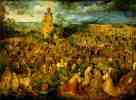 The Procession to Calvary The Procession to Calvary1564 (230 Kb); Oil on canvas, 124 x 170 cm; Kunsthistorisches Museum Wien, Vienna 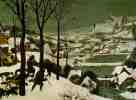 The Hunters in the Snow The Hunters in the Snow1565 (220 Kb); Oil on panel, 117 x 162 cm; Kunsthistorisches Museum Wien, Vienna 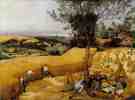 The Harvesters The Harvesters1565 (180 Kb); Oil on wood, 118.1 x 160.7 cm (46 1/2 x 63 1/4 in); Metropolitan Museum of Art, New York  The painter and the buyer The painter and the buyerc. 1565 (150 Kb); Pen and black ink on brown paper, 25 x 21.6 cm (9 7/8 x 8 1/2 in); Albertina, Vienna 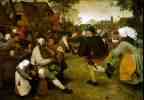 The Peasant Dance The Peasant Dance1568 (150 Kb); Oil on oak panel, 114 x 164 cm; Kunsthistorisches Museum Wien, Vienna Pieter Brueghel the Younger (1564-1638) was the elder of two sons born just a few years before their father's death. Known as "Hell Brueghel" because of his fascination with hobgoblins, fires, and grotesque figures, he made his career in Antwerp, where he became a master in the guild in 1585. He is best known as a copyist of his father's paintings, as they were both popular and scarce. In his own canvases, such as Village Fair and The Crucifixion, he shows a firm grasp of space and movement. His son, Pieter Brueghel III (1589-?1640), was also known primarily as a copyist.
Jan Brueghel (1568-1625), called the "velvet Brueghel," was the second son of Pieter Bruegel the Elder and, like his brother Pieter Brueghel the Younger, made his career in Antwerp. Known for his still lifes of flowers and for his landscapes, he was a friend of Peter Paul Rubens and collaborated with him in paintings such as Adam and Eve in Paradise. He specialized in small wooded scenes that were finely finished and brightly colored. His style was perpetuated by his sons Jan Brueghel II (1601-78) and Ambrosius Brueghel (1617-75), whose sons carried on the tradition into the 18th century.
|

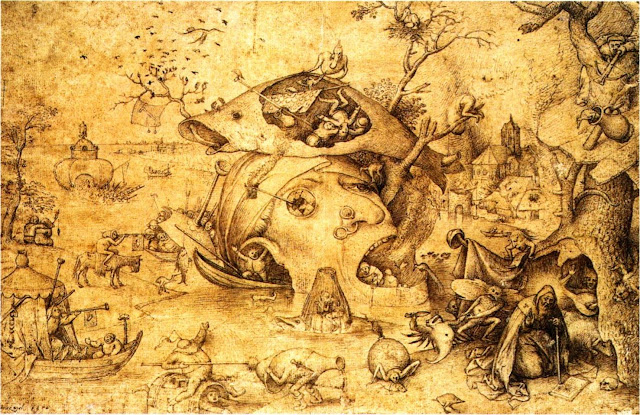
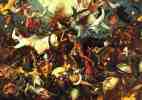
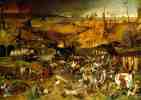
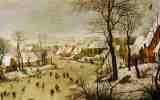
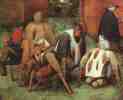
No comments:
Post a Comment
LEAVE A NOTE,PLEASE